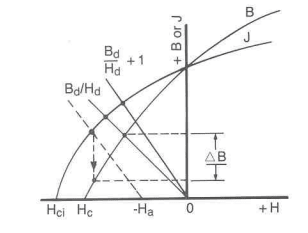Excerpt from LakeShore Measuring Permanent Magnet Characteristics with a Fluxmeter and Helmholtz Coil
"Deriving Intrinsic Flux Density
The magnetic moment of interest in permanent magnet testing is generally
defined as the intrinsic flux density per unit volume of magnet. Based on the
magnetic moment measurement and measured magnet volume, intrinsic
flux density, Bdi, can be calculated.
Moment/Volume"
How does the shape of the magnet influence this "Volume", or does it (arc segment, square or rectangular, cylinder, etc.) And if it does, how is this accounted for?
Clyde Hancock
Design & analysis of electric motors and generators
"Deriving Intrinsic Flux Density
The magnetic moment of interest in permanent magnet testing is generally
defined as the intrinsic flux density per unit volume of magnet. Based on the
magnetic moment measurement and measured magnet volume, intrinsic
flux density, Bdi, can be calculated.
Moment/Volume"
How does the shape of the magnet influence this "Volume", or does it (arc segment, square or rectangular, cylinder, etc.) And if it does, how is this accounted for?
Clyde Hancock
Design & analysis of electric motors and generators

